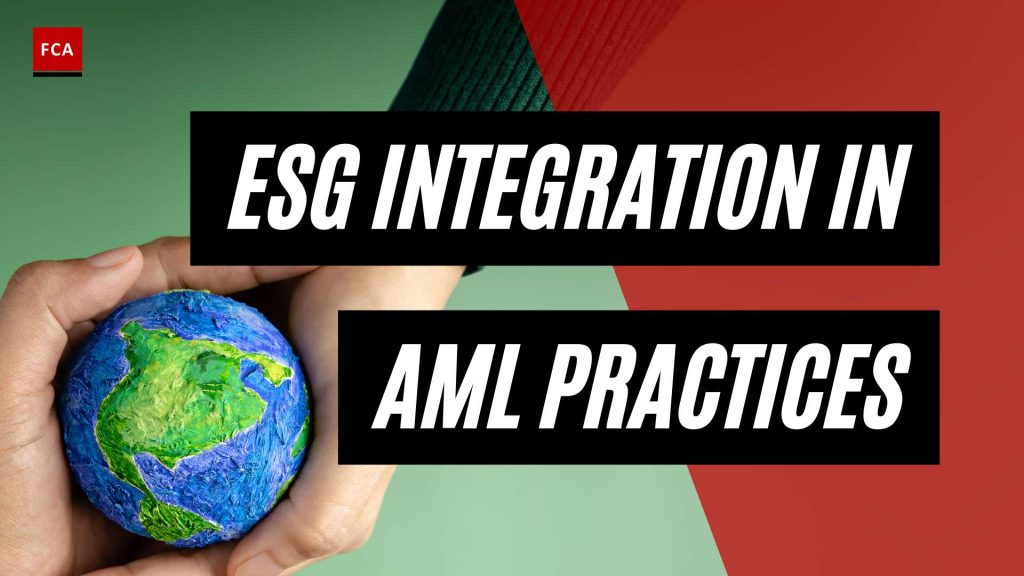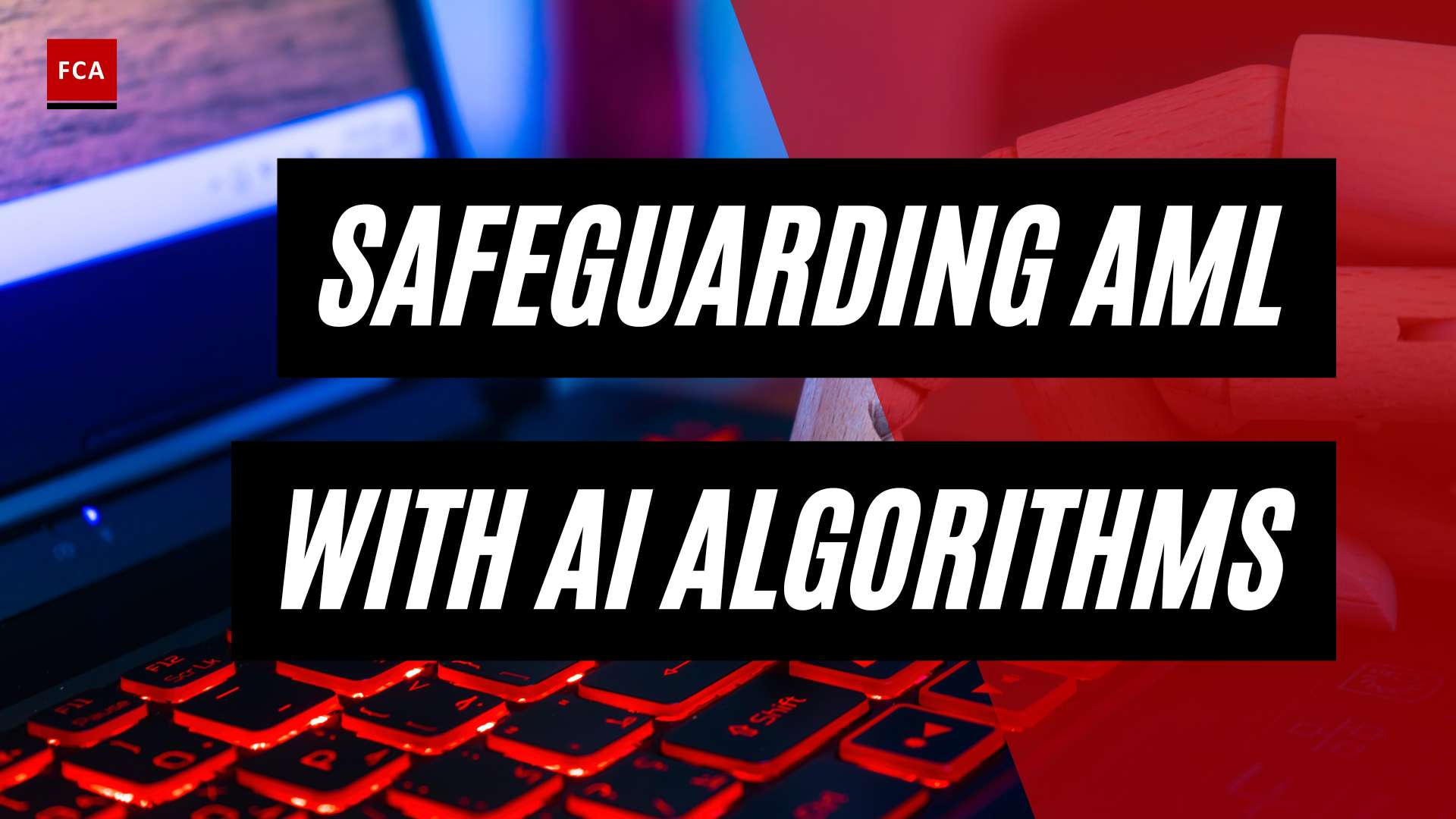The Intersection of ESG and AML
As the world of compliance evolves, the connection between Environmental, Social, and Governance (ESG) factors and Anti-Money Laundering (AML) practices is becoming increasingly apparent. This intersection presents new opportunities and challenges for professionals in the field.
Understanding the ESG-AML Nexus
ESG regulations are shifting towards the risk and compliance field, indicating a growing importance of ESG factors in AML practices. AML and ESG are two important components of compliance efforts. Financial institutions are now exploring ways to balance these two principles effectively to ensure sustainable compliance.
It’s important to note that AML and ESG are often kept separate, but there is growing recognition that the issues overlap, with both focusing on governance and social risks. Integrating AML with ESG can help firms leverage their AML capabilities to tackle modern slavery, forced labor, corruption, and environmental crimes.
It’s a missed opportunity to have separate functions for AML and ESG, as combining them can help companies streamline processes, reduce duplication, and enhance efficiencies, while also addressing the risks holistically (KPMG). For a deeper understanding of ESG reporting in AML practices, see our guide here.
The Role of AML in ESG Compliance
AML plays a critical role in ESG compliance. Companies that solely focus on AML may overlook broader ESG concerns, while firms that only concentrate on ESG may miss money laundering or terrorist financing risks. Linking these areas together can result in more comprehensive risk management.
In essence, the role of AML is to ensure that financial institutions are not used as vehicles for money laundering or terrorist financing. When AML is integrated into ESG compliance, it adds an extra layer of scrutiny to the ESG due diligence process, helping identify potential ESG risks that may have been overlooked. For more insights on the role of AML in ESG compliance, read about AML compliance and ESG standards.
As the world continues to evolve towards responsible and ethical business practices, the integration of ESG in AML will undeniably play a crucial role. By understanding the ESG-AML nexus and the role of AML in ESG compliance, professionals can equip themselves with the knowledge and skills necessary to navigate this developing landscape.
Benefits of Integrating ESG in AML
The convergence of Environmental, Social, and Governance (ESG) principles with Anti-Money Laundering (AML) practices is becoming increasingly recognized as a strategic imperative in the financial sector. This integration provides an array of benefits, from streamlining processes to enhancing risk management and improving reputation.
Streamlining Processes and Reducing Duplication
Integrating ESG principles into AML practices can help firms leverage their existing AML capabilities to tackle broader issues such as modern slavery, forced labor, corruption, and environmental crimes. This approach not only streamlines processes but also reduces duplication, leading to increased efficiencies.
Currently, many firms have separate functions for AML and ESG, a structure that overlooks the overlap between these two areas. By combining them, companies can address risks more holistically, which can lead to more comprehensive risk management, including in the detection of suspicious activities and potential risks (Zamparelli-McEvoy Giuffreda-De Battista).
Enhancing Risk Management and Reputation
Integrating ESG principles into AML practices can enhance risk management by providing a more holistic view of potential risks. This approach allows firms to better understand the broader stakeholder impacts of their operations and can lead to a more effective risk management approach.
In addition, integrating ESG factors into AML frameworks enhances the effectiveness of transaction monitoring, as it provides additional insights into potential risks and suspicious activities (Zamparelli-McEvoy Giuffreda-De Battista).
The integration of ESG in AML also has reputational benefits. It demonstrates a firm’s commitment to ethical business practices and transparency, which can boost its reputation among stakeholders, including customers, investors, and regulators. As such, ESG integration in AML can be part of a strategic approach to managing reputational risks and building trust in the marketplace.
Moreover, such ESG-AML integration can aid in achieving regulatory compliance requirements, helping companies adhere to international standards and guidelines, uphold ethical business practices, and foster transparency throughout their operations.
In conclusion, integrating ESG principles into AML practices is a strategic move that can enhance operational efficiency, improve risk management, and bolster reputation. For more insights on this topic, check out our articles on ESG reporting in AML and ESG risk assessment in AML.
Implementation of ESG in AML
Incorporating Environmental, Social, and Governance (ESG) factors into anti-money laundering (AML) practices is becoming increasingly important. This integration can enhance risk management, boost reputation, and aid in regulatory compliance.
Relevance of Environmental and Social Factors
ESG regulations are shifting towards the risk and compliance field, indicating a growing importance of ESG factors in AML practices. While AML and ESG are often kept separate, there is growing recognition that the issues overlap. Both focus on governance and social risks. Integrating AML with ESG can help firms leverage their AML capabilities to tackle modern slavery, forced labor, corruption, and environmental crimes.
Companies that focus on AML may overlook broader ESG concerns, while firms that concentrate on ESG may miss money laundering or terrorist financing risks. Linking these areas together can result in more comprehensive risk management. Integrating AML with ESG can also aid in achieving regulatory compliance requirements, fostering transparency throughout operations (KPMG).
For more on how environmental and social factors influence AML practices, see our articles on ESG reporting in AML and ESG metrics in AML.
Stakeholder Engagement in ESG-AML Integration
Stakeholder engagement plays a crucial role when integrating ESG principles into AML processes. Stakeholders, both internal and external, can provide valuable insights and feedback, ensuring smooth implementation and addressing any resistance that may arise.
Engaging stakeholders in ESG-AML integration can lead to a more effective risk management approach and potentially enhance the company’s reputation. Stakeholders can provide a broader perspective on the impacts of the company’s operations, leading to better understanding and management of risks.
For a deeper understanding of stakeholder engagement in ESG-AML integration, see our articles on ESG due diligence in AML and AML compliance and ESG standards.
The Role of Technology in ESG-AML Integration
With the increasing convergence of Anti-Money Laundering (AML) and Environmental, Social, and Governance (ESG) concerns, technology plays a pivotal role in facilitating this integration. It enables organizations to leverage existing AML capabilities for ESG risk assessment and enhances transaction monitoring with ESG factors.
Leveraging AML Capabilities for ESG Risks
The integration of AML and ESG can help firms tackle modern issues such as forced labor, corruption, and environmental crimes by making use of their existing AML capabilities. This overlap of issues focuses on governance and social risks (KPMG).
For example, the data and systems used for AML processes can be employed to evaluate ESG risks. This cross-functionality allows for a more comprehensive risk management approach, enhancing the understanding of broader stakeholder impacts of their operations, and potentially improving their reputation. Furthermore, it can aid in achieving regulatory compliance requirements, fostering transparency throughout their operations.
Incorporating key ESG-related performance indicators in AML processes is crucial for better identifying and mitigating environmental, social, and governance illicit activities (LinkedIn).
Firms looking to integrate ESG in their AML practices can find more insights in our article on ESG metrics in AML.
Enhancing Transaction Monitoring with ESG Factors
The synergy between AML and ESG provides an opportunity to enhance transaction monitoring. By considering ESG factors in transaction monitoring, firms can gain a more holistic view of risks. It allows for the identification and mitigation of potential ESG-related risks that might otherwise be overlooked in traditional AML processes.
Moreover, ESG disclosures can inform aspects of AML compliance. Specifically, they can provide valuable insights into a company’s commitment to ethical business practices, which can be crucial in assessing money laundering or terrorist financing risks.
To effectively address ESG considerations, financial institutions should consider updating AML risk assessments, policies, and procedures. They should also enhance internal controls, adjust risk appetite statements, and provide updated information on vulnerabilities to senior management. Conducting ESG AML training and ensuring independent testing of ESG-related AML processes is also crucial.
In conclusion, the role of technology in ESG-AML integration is pivotal. It not only allows for better identification and mitigation of risks but also fosters transparency and adherence to international standards and guidelines. For more insights into leveraging technology in ESG-AML integration, read our article on ESG data analysis in AML.
Regulatory Expectations for ESG-AML Integration
Regulatory bodies worldwide are recognizing the importance of integrating Environmental, Social, and Governance (ESG) factors into Anti-Money Laundering (AML) frameworks. This shift is driving changes in compliance and risk management practices across the financial industry.
Compliance with AMLD6 and ESG Requirements
The sixth EU Anti-Money Laundering Directive (AMLD6) is one such regulation that broadens the list of predicate offenses to encompass environmental crime and cybercrime. This change necessitates an expanded AML framework that encompasses anti-corruption, anti-fraud procedures, and ESG-related risks.
To comply with AMLD6, financial institutions must assess and mitigate ESG risks at both the organizational and client levels. This adaptation involves evaluating technology solutions for transaction monitoring and screening, enhancing AML resource management, and prioritizing compliance staff training. For more on AML regulations and ESG requirements, visit our article on aml regulations and esg requirements.
Moreover, the Securities and Exchange Commission (SEC) has proposed rules amendments to require more information about ESG investment practices. This proposal indicates the growing importance of ESG considerations and the significant capital inflows to ESG-related services and investment products (LinkedIn).
Addressing ESG Risks in AML Risk Assessments
The integration of AML and Countering the Financing of Terrorism (CFT) frameworks with ESG principles is proving to be a powerful strategy for comprehensive risk assessment and management. This integration reflects the recognition of the value of holistic risk management approaches in today’s complex business landscape.
Incorporating ESG risks into AML risk assessments involves evaluating potential environmental, social, and governance risks associated with clients and transactions. This integration can lead to more robust due diligence processes, as discussed in our article on esg due diligence in aml.
Integrated reporting that showcases an organization’s commitment to both financial integrity and ethical responsibility is another aspect of ESG-AML integration. By aligning with regulatory requirements from AML/CFT and ESG, organizations can ensure compliance while minimizing complexities and penalties. This alignment ultimately enhances trust and credibility with stakeholders. For more on this topic, visit our article on esg reporting in aml.
Case Study: ESG and AML in Practice
Having discussed the benefits and implementation of ESG integration in AML, let’s dive into the practical application of these principles.
ESG in Due Diligence and Risk Assessments
Incorporating ESG principles in AML programs leads to a better understanding of clients’ behavior and can improve risk assessments by identifying emerging risks related to environmental and social matters. ESG criteria can aid in the identification and monitoring of politically exposed persons (PEPs) and high-risk customers, aligning with AML requirements for enhanced due diligence. For more information on ESG due diligence in AML, refer to our article on esg due diligence in aml.
An effective ESG-AML risk assessment should consider a range of factors, including but not limited to:
- The potential environmental and social impacts of the client’s activities
- The client’s adherence to relevant ESG standards and regulations
- The client’s connections to high-risk jurisdictions or sectors
- The client’s existing governance structures and policies
For more information on ESG risk assessment in AML, refer to our article on esg risk assessment in aml.
The Impact of ESG on AML Compliance
The integration of ESG principles in Anti-Money Laundering (AML) policies can help financial institutions better understand and mitigate risks associated with money laundering, terrorist financing, and corruption, ultimately improving financial integrity. A robust ESG integration in AML strategies requires ongoing monitoring, reporting, and regular updates to adapt to changing ESG risks and regulations, ensuring alignment with global standards and best practices.
By integrating AML with ESG, companies can improve their understanding of the broader stakeholder impacts of their operations, leading to a more effective risk management approach and potentially enhancing their reputation. For more information on AML compliance and ESG standards, refer to our article on aml compliance and esg standards.
This practical application of ESG in AML illustrates the synergy between these two areas and underscores the potential benefits of aligning AML practices with ESG considerations. From enhanced risk management and streamlined processes to improved stakeholder engagement and reputation, the integration of ESG in AML practices offers significant value for organizations navigating the complexities of today’s regulatory landscape.








